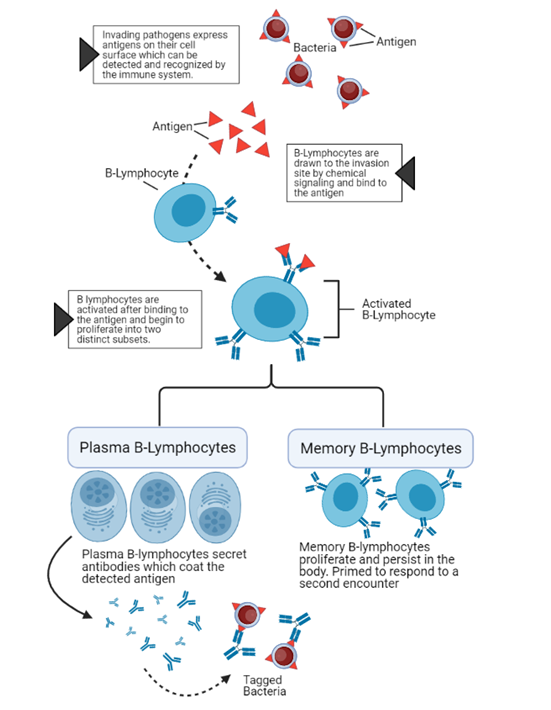Subject 2: Adaptive Immunity and Vaccines
You may now ask: “Why not expose the immune system deliberately to an antigen so that the memory B-lymphocytes form and when the immune system is exposed to the antigen during infection it is already prepared?” This is exactly how vaccines work. A vaccine typically contains a substance that is similar to the antigen, often in a weakened or inactive form. When it is injected into the body, it triggers the formation of memory B-lymphocytes. Now, the immune system is prepared for the antigen and containment of the disease can start immediately after exposure. It is important to note that some vaccines may cause undesired allergic responses as well as flu-like side effects, but if the vaccine was tested thoroughly before being released the side effects are less severe and occur less frequently than the symptoms of the targeted disease.
[Note, that the process is described in an abridged way, due to the limited scope of this sample.]
Questions:
